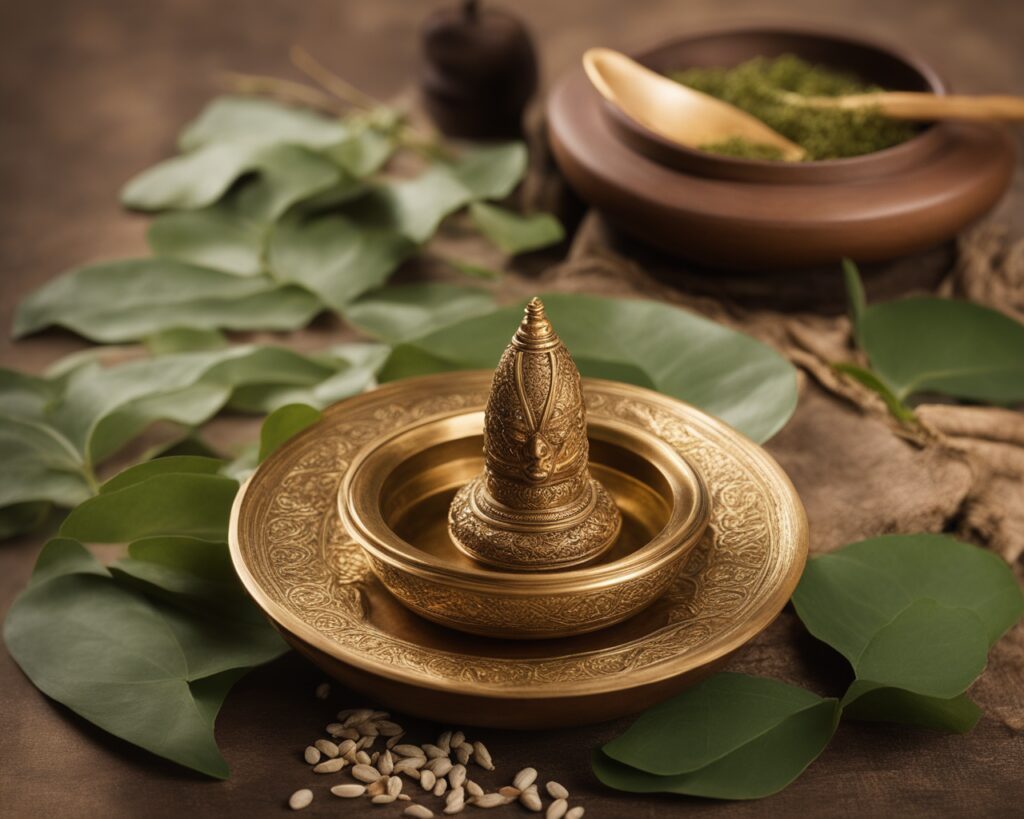Embracing Dinacharya: The Ayurvedic Daily Routines for Health and Wellness
By Dennis Bluthardt at Namaste Studios
Understanding Dinachary
Based on the principle that the human body is part of the cosmos and is greatly affected by its rhythms, Dinacharya’s purpose is to be in sync with this eternal rhythm so that the doshas (the physical embodiment of the elements: space or ether, air, fire, water, and earth) operate as smoothly as possible in the body.
Following Dincharya can lead to:
- A marked reduction in complaints regarding all bodily functions, particularly digestion
- Improved energy levels
- Fewer symptoms of the persistence of chronic ailments
- Enhanced mental function, including memory and the ability to concentrate
- Improved “glow,” or overall physical appearance/reduced signs of premature aging
- Feeling less affected by seasonal changes
- Increased positivity and “life satisfaction”
- Increased connection to nature
The ability to be more productive because one is healthier and feels better.
Adapting the teachings of Ayurveda to match your own life better will benefit you and those around you. It starts with small details of daily self-care and extends into anything you find interesting.

The Components of an Ideal Morning Routine
Waking with the sun and ordering our daily lives to be in step with our circadian rhythms could do more than make us feel good now. It could profoundly impact our overall health and well-being. Natural light is exposure number one of 14, and the HPI counts as crucial for setting our internal body clocks. This is the science of light. Its power, or lack thereof, is part of what the architects call the health equation. This slight lifestyle change can improve mood and cognitive function so you can better focus on tasks and be more productive throughout your day.
You should also already be doing the basics, such as drinking a cup of water and maintaining oral hygiene. After a night’s sleep, the body requires water to jump-start the metabolism and keep everything running. We hope that you’re brushing your teeth. It’s so almost sure that you are. But logic aside, this is a near-blanket statement. Brushing teeth is a nearly specific act in society, with teeth being a powerful functional and aesthetic part of our lives. Brushing our teeth is refreshing and does wonders for our health. Very few people (none that I’m aware of in a public health context) have you almost sure to do this with intangible benefits heightened. Yet, here we are.
Finally, after a good night’s rest, aim for a period of mindfulness. This could be meditation, yoga, or simply some breathing exercises. This helps to set a calm mindset, reduce stress and anxiety, and find that place of peace.
Of course, an Ayurvedic routine wouldn’t be complete without an Ayurvedic breakfast!
According to the Ayurvedic rules, eat something small and light. This could be fresh fruit, warm oatmeal with calming, sweet, and heating spices like cardamom, cloves, black pepper, ginger, saffron, or herbal teas. Digestive spices will help to support the complete digestion of your breakfast, while natural sugars will give you an energy boost.

Midday Practices for Sustained Energy
Ayurvedic eating principles form the basis for keeping your energy humming throughout the day. Ayurveda teaches us that consuming the right foods for our constitution, energetics, or dosha is best. Aligning yourself with nature will benefit digestion, lead to fewer disruptive peaks and valleys, and ultimately end in a less rocky digestive road. Who doesn’t want that? Stick to fresh, seasonal, and locally sourced foods whenever possible. After all, the body wants easy-to-digest foods to think clearer and feel better. The hit-the-ground-running soul will not have it any other way. Be brave.
Next up is mindfulness and self-care, which is how to reset. Taking a moment for yourself helps define calm and focus. Heave a massive sigh of relief and go there, sister, even if it’s only for five. You need it. Start with one. Slowing down combats premature aging, counteracts tired adrenals, centers oneself, and aids in concentration. Being in the moment will help you deliver what you need. And isn’t that what it’s all about? It takes way fewer muscles to work smarter than more complicated ones. And you, fabulous people, deserve some chill time. Who doesn’t want this, right?
Finally, that beautiful body. Duplicate physical movement to get that energy going. And, when you start to surrender, move that body and shake it off! Think more walking, exercise, stretching, or yoga. Moving the body helps equalize equanimity in conjunction with a clear conscience.
Walking in the morning eliminates fatigue and lifts heavy, sad spirits. Unless you are a clinically depressed snowman, you might need some heat.

Evening Routines for Restful Sleep
A pre-sleep ritual lets your brain know it’s time to shift gears. You go through this ritual to signal your body that it’s time to get ready for sleep. It tells your brain that you are transitioning from the daytime busyness to the calm of the evening. Should you wish to attempt this ritual, read several pages of a book. Practice some gentle yoga or do some light stretching. You might do these things to help you make the transition. These are not just activities that some people do for no reason; they are excellent ways to reduce tension. Reducing your exposure to screens in the hour leading up to bed will help you achieve this. Taking a moment or two to reflect on the day will encourage the kind of self-discipline that many people maintain in the short term (like when trying to get into the habit of keeping a journal, for instance) but rarely preserve in the long term. Even from the outset of maintaining a journal, however, you could still only write about those little things that make the day what it is – writing even when you don’t know what to write about.

The Role of Self-Discipline in Dinacharya
It would be impossible to switch focus a bit and discuss the sticking power of daily routines and practices such as Dinacharya without mentioning self-discipline.
Discipline, the power to say no to distractions and yes to what we commit to, helps create a container for the rest of one’s life. You can rely on discipline to provide structure and to demand adherence to daily practices. Discipline also aids in many other areas of life because, if cultivated, it clears up precious mental space and can make any day more productive.
How about creating goals for a new daily routine?
Well, start small.
Rather than jumping in the deep end, for example, bombarding your morning with new items to check off your list (on top of what probably already exists), start by incorporating a new routine, but just a tiny part of that routine. For a Dinacharya daily routine, it could be as simple as starting your day five minutes earlier by beginning to wake up at the sound of birdsong rather than by canceling the 14th push of the snooze button.
As the previous section references, do what feels right. This brings our following tool to the fore: use SMART goals. Also, erase each old, decadent habit, one by one (replacing each with a new habit), as you are comfortable with.
Track your progress. Document each day. Progress is made daily if you follow the habits, you know you should. Try an app, a health tracker, or a heart rate monitor if you struggle to get results. Use the tools to eradicate bad habits if you have the right tools. This should have been obvious, but what is the ‘cheese’ at the end of the maze for completing successful goals? You get the idea, but just a refresher.

“Dinacharya,” the Ayurvedic practice of daily routines, promises better health and increased inner wealth. Based on the belief that your physical, mental, and emotional bodies thrive through rituals and routines, these ancient therapies work magic when consistently practiced without the distractions of your dopamine-releasing apps. Like the mindful mornings you pin to your “AM Habit” Pinterest board, these Ayurvedic practices include oil-pulling, tongue-scraping, and morning elimination. They stop short of a 60-minute yin yoga routine, but you can’t win them all.
Start small and encourage your students to do the same. Report your experience. But don’t pick the most effortless morning routine involving downing your first espresso double shot.
To learn more, visit Ayurveda at Namaste Studios to book an Ayurveda session. Additionally, you can find more of our Ayurveda Blogs here.
For a Limited Time: Get your NEW MOON JOURNAL for a massive discount at Amazon here!
Bonus for blog readers: Watch how this Hybrid AI chatbot can save thousands of hours interacting with your clients. Click here for a FREE WEBINAR – It’s AMAZING!




